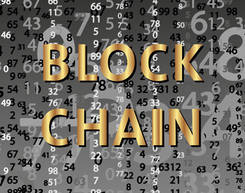At the moment a technology is developing and only now are we starting to understand its full potential: the blockchain technology.

This article was also available in the pv magazine.
Blockchain is a decentralised register over which transactions, using the blockchain technology, can be saved and verified. In comparison to a conventional database is the blockchain is not a central server, this means that not only a few participants can get hold of the information because it is saved decentral as multiple copies. All the participants can get hold of the current state of the transactions because a copy of the blockchain is saved on their computers or servers. This leads to the organisation of a public database being, so to speak, spread over all of the connected computers. And the blockchain is said to be safe from manipulation due to the multiple confirmations in the peer-to-peer network.
And this is where things become interesting for the energy- branch, because you can do more than just verify transactions. The blockchain also allows you to carry out intelligent contracts known as “smart contracts”. The content, rules and regulations are defined in protocols and are “coded”, so are changed into programming code. The carrying out and conduct of payments, collection of data and the verification of the transactions is then automatic which gives us an amount of transparency which we have never had before. Smart contracts allow different kind of business models to be illustrated in one blockchain.
The progressing digitalisation in a decentral energy market offers potential to develop innovative new business models. The diversification of the different kinds of market participants is a continuous process which opens the door to smaller, autonomous market players and services to have an influence in the market. Different uses of the blockchain technology in the area of business transactions and contracts could be:
- Solutions for e-mobility (charging and car sharing)
- The buying and selling of electricity from your own systems
- Stopping the delivery of electricity
- Battery management, building a pool of saved electricity and supporting community energy models.
- Connecting energy buyers with operators of renewable energy systems
There are further possibilities to use the blockchain in the areas of documentation and compliance:
- A lregister about the ownership structures and what condition the buildings or plants are in.
- Verification and proof that green electricity or C02 certificates are not fake.
- The automated reading of smart meters.
In New York, April 2016, the first electricity trades between neighbours with blockchain technology were made. The bills and payments of renewable energy in a decentral energy system could be done this way without having to take a “detour” through the main energy supplier. This would mean that electricity could be traded directly between suppliers and demanders. The fundamental base necessary to make this happen is that the conditions of the electronic contracts are decided upon in advance, smart contracts, which would allow the processes to be automated. With the help of the blockchain the role of intermediate parties like trading platforms, traders, energy suppliers and banks can be significantly reduced. This would then lead to sinking system costs, since lots of activities could be done automatically and electronically.
The citizens of New York are not the only ones who want to bring blockchain into energy economics. The startup company One up from the Netherlands is following a similar goal and has developed a prototype of a decentralized transaction- and energy delivery- system. Therefore the energy data from ten households are compareable and surplus solar energy can be delivered to the neighbours and billed with the help of a blockchain.
The blockchain startup company Slock.it and RWE are operating on two projects which will hopefully help to charge electronic cars more easily. In the first project the blockchain should help to create a standardized and uncomplicated paying system, which should ensure a high level of protection. The second project which is called blockcharge has to do with developing a plug called a Smart Plug, which does not only allow you to recharge your own car at a charging station but also allows you to recharge your car anywhere where there is electricity. With the help of an App the user should be able to control the Smart Plug and see the charging process visually. The billing of the payment, just as saving the transaction and charging data happens with the help of a blockchain.
On top of that the exchange Nasdaq has introduced the service LINQ which should above all be used in the area authentication for the certification of solar power. This service uses blockchain technology.
This and similar developments and usages of blockchain technology make it clear that the energy branch has to discuss and deal with this topic. Consumers could turn away from energy suppliers, leading to more traditional business models being muddled up.



